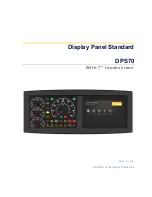
This example shows communication-enhanced coordination for a permanent fault.
• All IntelliRupter fault interrupters are closed and coordinated where possible.
See Figure 23.
• IntelliRupter fault interrupters IR3 and IR4 detect the fault and send curve-shift mes-
sages to their source-side neighbors. See Figure 24.
• IR2 and IR3 shift to a slower TCC curve. See Figure 25.
• IR4 trips and locks out after testing is completed.
• IR2 and IR3 change back to the original CEC fast curve. See Figure 28.
CEC Example for a
Permanent Fault
IR1
IR3
IR2
IR4
IR5
SHIFT
SHIFT
Figure 24. CEC permanent fault; IR3 and IR4 detect the fault and send a curve-shift message.
600 A
IEEE Inverse
400 A
IEEE Inverse
IR1
IR3
IR2
IR4
IR5
IR1
IR3
IR2
IR5
600 A
IEEE Inverse
400 A
IEEE Inverse
IR4
Figure 25. CEC permanent fault; IR2 and IR3 shift to a slower TCC curve.
Figure 26. CEC permanent fault; IR2 and IR3 return to the fast CEC curve.
Figure 23. CEC permanent fault; all IntelliRupter fault interrupters are closed and coordinated.
IR1
IR3
IR2
IR4
IR5
600 A
IEEE Inverse
400 A
IEEE Inverse
S&C Instruction Sheet 766-530 37
Communication Enhanced Coordination
















































